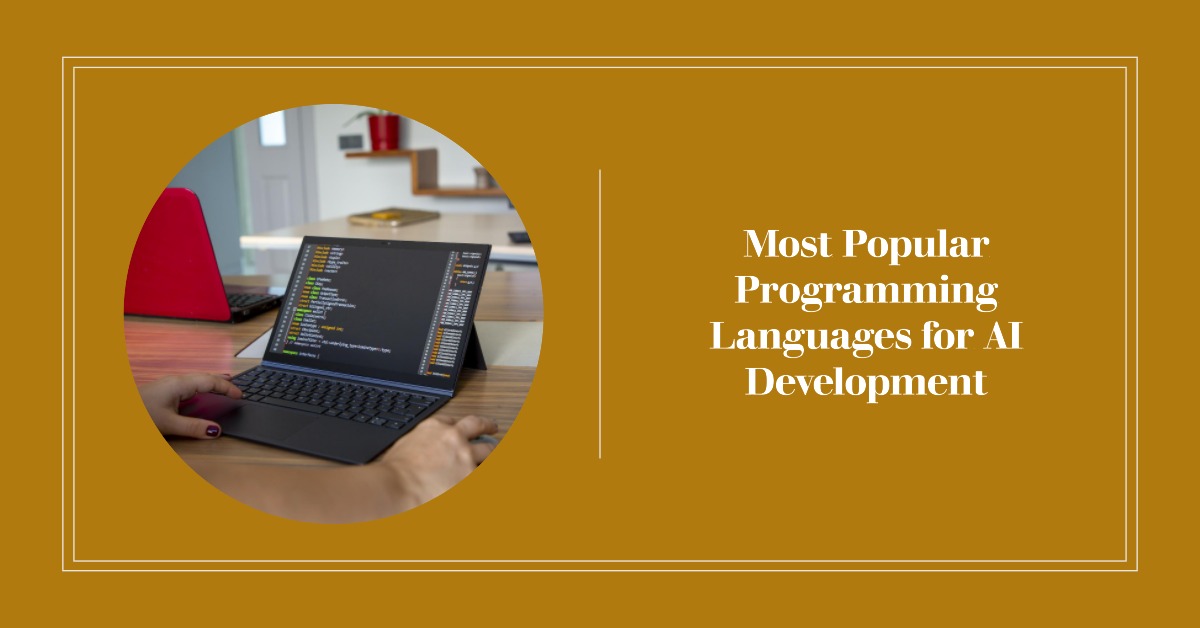AI programming involves creating algorithms and systems that enable machines to perform tasks that typically require human intelligence. Machine learning is a subset of AI programming that empowers systems to learn patterns from data. Deep learning is a specialized form employs neural networks to mimic human brain functions.
Natural Language Processing (NLP) enables machines to understand and generate human language. Reinforcement learning allows AI to make decisions based on trial and error. AI programming plays a pivotal role in diverse fields from autonomous vehicles to healthcare diagnostics transforming industries and enhancing efficiency.
Want to know everything in detail? Read this article by a company that offers the best web design services in Delhi –
Python
Python is a popular programming language in AI development due to its extensive ecosystem of libraries and frameworks including TensorFlow, PyTorch, and scikit-learn. Known for its simplicity and readability, Python facilitates rapid prototyping and experimentation.
Its community support and a wealth of resources make it the go-to language for machine learning and deep learning applications allowing developers to efficiently implement and deploy AI solutions across various domains.
Java
Java is a versatile, object-oriented programming language widely employed in AI development particularly in enterprise-scale applications. Known for its portability and performance, Java is favoured in large-scale systems where robustness and scalability are paramount.
Its platform independence facilitated by the Java Virtual Machine (JVM) allows developers to deploy applications across diverse environments. While not as dominant in AI as Python, Java’s strengths lie in its mature ecosystem strong community support and suitability for building complex, enterprise-level AI solutions.
JavaScript
JavaScript primarily a web development language has found relevance in AI through TensorFlow.js and similar frameworks. Its adoption stems from its ability to execute machine learning models directly in web browsers enabling client-side AI applications.
This approach facilitates interactive and real-time experiences without relying on server-side processing. JavaScript’s ubiquity in web development also contributes to its growing role in democratizing access to AI making it more accessible to a broader audience of developers and users.
Haskell
Haskell is a functional programming language, distinguishes itself with a robust type system and mathematical elegance. Although not as widely adopted as Python, Haskell earns acclaim for its expressiveness and safety in specific AI applications. Its functional paradigm emphasizing immutability and pure functions appeals to developers seeking reliability and maintainability.
Haskell’s niche role in AI underscores its suitability for tasks where precision and mathematical clarity are paramount even if it may not be as prevalent in broader software development contexts.
C++
C++ is a high-performance programming language favoured in AI development for its efficiency. Known for its close-to-the-metal capabilities, it is chosen in applications requiring substantial computational power such as computer vision and gaming AI.
Its strength lies in managing system resources effectively making it a pragmatic choice for tasks demanding speed and responsiveness. Its widespread use in industries like finance and gaming underscores its versatility and enduring relevance in the AI landscape.
Scala
Scala is a programming language that runs on the Java Virtual Machine (JVM) combining object-oriented and functional programming features. It is utilized in AI development particularly in the domain of big data processing. Scala’s seamless integration with Java allows developers to leverage existing Java libraries and frameworks.
Its conciseness and expressiveness make it well-suited for developing scalable and distributed systems with Apache Spark being a notable framework for large-scale data processing where Scala is commonly employed.
Julia
Julia is a high-performance programming language specifically designed for numerical and scientific computing. Notable for its speed and ease of use, Julia excels in tasks involving mathematical and scientific computations making it increasingly popular in AI applications. Its just-in-time (JIT) compilation and dynamic typing contribute to rapid development and execution of numerical algorithms.
Julia’s growing ecosystem includes libraries and tools tailored for machine learning and data analysis making it a promising choice for researchers and practitioners in the AI and scientific computing communities.
R
R is a statistical programming language widely employed in data science for statistical modelling and machine learning. Recognized for its extensive set of statistical and graphical techniques, R facilitates robust data analysis and visualization.
Its popularity stems from its suitability for handling large datasets and performing complex statistical computations making it a preferred choice for researchers and data scientists engaged in various AI-related tasks and experiments.
Lisp
It including variants like Common Lisp and Clojure, holds historical significance in AI development due to its early adoption and influence in symbolic reasoning and artificial intelligence research.
While it may not be as prevalent in contemporary AI applications, Lisp’s unique features such as its powerful macro system and flexibility, still attract developers in specific niches and research areas where it’s expressive and dynamic nature can offer advantages.
Go (Golang)
It is a programming language recognized for its simplicity concurrency support, and efficient performance. While not as prevalent in AI as some other languages, Go finds its niche in AI development particularly in projects requiring concurrent processing and scalability.
Its simplicity and built-in support for parallelism make it suitable for developing efficient and robust systems especially in cloud-based or distributed computing environments.
Swift
Swift, Apple’s programming language is employed in AI development particularly for crafting applications with machine learning features on iOS devices. Leveraging Swift allows developers to seamlessly integrate AI capabilities into iOS apps capitalizing on Apple’s Core ML framework.
This facilitates tasks like natural language processing and image recognition. Swift’s role extends beyond general-purpose programming positioning itself as a valuable language for creating intelligent and responsive applications within the iOS ecosystem.
Lastly
Neural architecture search and reinforcement learning will refine model architectures. Quantum computing might revolutionize AI by solving complex problems faster. Based on the experience of the best ecommerce web development company in Delhi, ethical considerations and responsible AI practices will gain prominence. Interdisciplinary collaboration will grow as AI intersects with fields like biology and climate science. Overall, the future involves more accessible, powerful, and ethical AI, with continual evolution and integration into diverse aspects of daily life and industry.
Ending Words
The future of AI programming is poised for remarkable advancements. Increasingly sophisticated algorithms, improved hardware, and expanded datasets will drive innovation. Automated machine learning tools will democratize AI, enabling non-experts to develop models.



